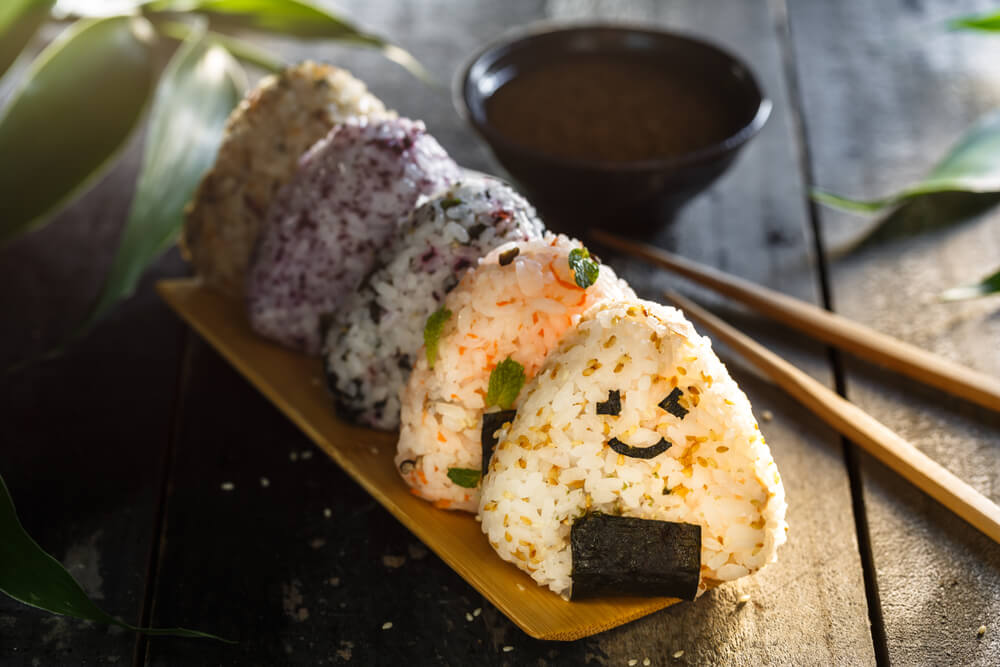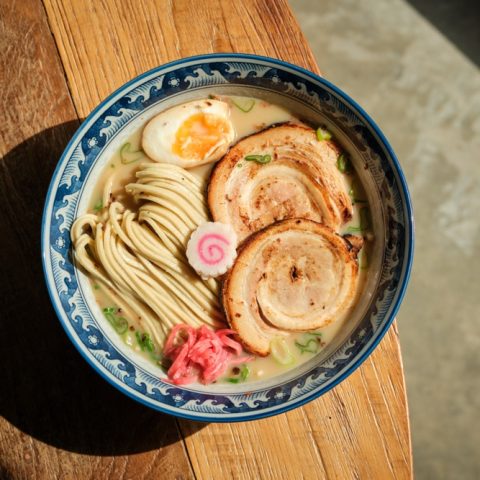
You may have seen Japanese anime as a child and, like myself, have been mesmerized by the food that the characters ate. It seemed so otherworldly, a far cry from the lunch meat sandwiches my mum used to make me for school. The thing was – I had no clue what any of it was! I’d never seen them in real life before.
In an episode of Pokemon the Squirtle Squad steals the gang’s delicious “jelly donuts”. Upon rewatching this as an adult, I realised the jelly donuts were actually onigiri – rice balls, the classic snack from convenience stores in Japan. The translator had clearly changed the translation to make sense in a western context. Despite this, anime can be a great way to learn about Japanese cuisine.

If you visit Japan, you’ll quickly understand the significance of food in the culture. It’s the little things that create a ritual surrounding meals. Cleaning your hands with an Oshibori (hot towel), giving thanks before the meal (“Itadakimasu!”), declaring how delicious the food is while eating it (“Oishii, ne?!”) and giving thanks after your meal too (“Gouchisousamadeshita!”). However, much like Hollywood is far from an accurate representation of American culture, Japanese anime does not equate to reality. Yet many agree that Japanese screenwriters and illustrators are talented in depicting facets of everyday life in Japan with glistening accuracy.
Take the famous Studio Ghibli movies. Whether we look at Spirited Away, Kiki’s Delivery Service or My Neighbor Totoro, all Ghibli movies seem to feature food. Arguably the food brings a three dimensional element to the characters. The movie universe is enriched by the fact that the characters need to eat like real humans! But there’s more to it than that, the food often proves to add context to the moment. For example, in Spirited Away, Chihiro’s parents stuff their faces with a buffet of juicy pork, only to turn into pigs themselves. Or in My Neighbor Totoro, the young sisters are seen packing their own bentos (lunchboxes). Usually their mother would make their lunch and it’s showcasing how independent they had become and that something was different within their family.
*contextual analysis of ghibi taken from https://www.pastemagazine.com/articles/2017/01/studio-ghiblis-most-iconic-meals.html
Let’s take a look at three iconic Japanese foods in anime. That is to say, popular food among Japanese people in real life and equally popular with the characters of our favorite anime.

1. Ramen
Ramen is a dish we’re probably all familiar with. And hopefully you know how delicious it is! Ramen is an extremely popular dish to see in anime – and for good reason. These classic, yummy bowls are cheap, convenient and tasty. The foundation of all ramen is noodles and broth – popular broths being salt, soy sauce, pork broth and miso. In terms of toppings, the list is endless: green onion, bamboo shoots, boiled egg, seaweed, fishcakes (called Narutomaki). Naruto (from Naruto), one of the most famous characters of anime, is named after this fishcake. He himself has a penchant for this hearty meal. In fact, his favorite ramen shop, Ichiraku Ramen, is real and is located in Fukuoka! Kishimoto Masashi, the author of the original manga, drew inspiration from his favorite, local ramen joint.
If you’re in Tokyo and want to try ramen, you don’t have to look too far – you’ll see ramen joints on practically every corner. In Tokyo Station, there’s even an area called “Ramen Street”! If you are vegan or eating gluten free, be sure to check out Sora No Iro Nippon – their ramen may have no animal products or gluten but is definitely not in lacking flavor!

2. Onigiri
Onigiri (rice balls) may have been one of the first Japanese foods you became aware of via anime. Onigiri is a classic part of kids’ school lunches and seeing as a lot of anime centres around characters who are children, it’s only natural to incorporate one of their most beloved foods.
Onigiri are balls of rice, often triangular, wrapped in seaweed. They can be plain, or have a filling. And the filling range is plentiful: tuna mayo, pickled plum, salmon, fried chicken, spicy fish egg…the list goes on. Not only do mothers make these deliciously simple snacks for school lunchboxes, but onigiri are also extremely popular with busy adults. Onigiri is the go to lunch for the work force pressed for time, as there is a vast range of flavors in convenience stores across Japan! They’re so popular that people even swear by a specific convenience store’s onigiri – Many onigiri fans become loyal to 7-Eleven, Lawson or Family Mart and will argue which is the best!


3. Various Pastries, including pancakes and melon bread
As we said, many anime are directed towards a young audience. Children love sweet things. As a result, a lot of anime showcase the wonderful world of Japanese desserts! One of Japan’s all time favorite anime characters is Doraemon. Doraemon is a robot cat who is partial to Dorayaki – two fluffy pancakes made into a sandwich usually filled with sweetened red bean paste, though they sometimes you can find matcha cream or custard inside.
Another popular kids anime is Anpanman, a superhero with a sweet bun for a head. The sweet bun is called Anpan, and is filled with the same red bean paste as Doriyaki. His fellow superheroes include Melonpanna and Karepanman. Melonpanna’s head is made out of Melon Pan (a bread that is shaped like a melon), while Karepanman’s head is a bun filled with curry.
These yummy pastries can be found at convenience stores as well as speciality bakeries everywhere. When you think about delicious baked goods, Japan may not spring to mind but make no mistake, patisseries are taken very seriously here! There are countless patisseries scattered around Tokyo.
We have only scratched the surface of food in anime. You can find many more popular foods featured, such as Takoyaki (fried octopus balls in a worcestershire-style sauce) or Omurice (ketchup fried rice covered in omelette and a demi glace sauce). The social and contextual placement of food in anime is such an extensive topic, but that’s for another day 😉. The next time you watch anime, try and see how many Japanese foods you can spot.
A word of warning though: don’t watch when hungry!
Want to slurp your ramen like an anime character? Be sure to book our ULTIMATE ramen tasting tour in Tokyo!



